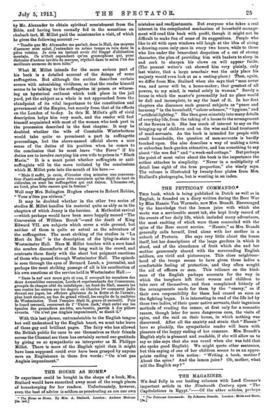THE HOUSE AS HOME.*
Tb' experience could be bought in the shape of a book, Mrs. Stallard world have smoothed away most of the rough places of housekeeping for her readers. Unfortunately, however, even the best of advice is seldom as penetrating as are our own
• The House as Home. By Mrs. A. Stallard. London : Andrew Melrose De. beta
mistakes and readjustments. But everyone who takes a real interest in the complicated mechanism of household manage- ment will read this book with profit, though it might not be difficult to make fun of some of its suggestions. People who like to sit with open windows will laugh at the idea of airing a drawing-room only once in every two hours, while to those who live under the benevolent despotism of a cat of strong character, the plan of providing him with baskets to sleep in and cork to sharpen his claws on will appear futile. (The present writer's cat showed him very plainly, only last winter, that a large armchair was the only place his majesty would even look at as a resting-place.) Then, again, we differ from Mrs. Stallard when she says that "man never was, and never will be, a home-maker ; that greatest of all powers, to my mind, is vested solely in woman." Surely a house in which the master's personality had no place would be dull and incomplete, to say the least of it. In her first chapters she discusses such general subjects as "peace and harmony " in the household, " colour schemes," " hygiene," and "artificial lighting." She then goes minutely into many details of everyday life, from the taking of a house to the arrangement of the flowers in it. She has much of interest to say on the bringing-up of children and on the wise and kind treatment of maid-servants. As the book is intended for people with small households, the question of men-servants is hardly touched upon. She also describes a way of making a town or suburban back-garden attractive, and has something to say about "the wee flat" and " a week-end cottage." But perhaps the point of most value about the book is the importance the author attaches to simplicity. "Never in a multiplicity of detail lose sight of the true proportion," she wisely says. The volume is illustrated by twenty-four plates from Mrs. Stallard's photographs, but is wanting in an index.


















































 Previous page
Previous page